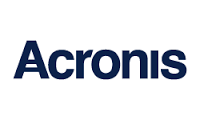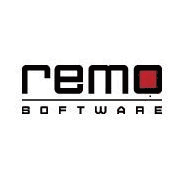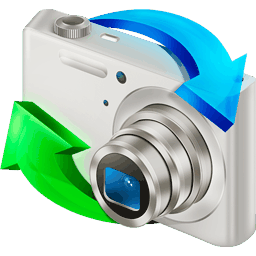Yes, most photo recovery applications may be used on many devices and platforms. This means that you should be able to recover your deleted images using the software on any computer, laptop, or mobile device, independent of operating system. However, before purchasing any program, always ensure that it is compatible with your unique device and platform.
List of 20 Best Photo Recovery Software
Acronis offers industry-leading backup, disaster recovery, and data access solutions for individuals, small and medium-sized businesses, and enterprises. Their comprehensive suite includes efficient software for backing up physical, virtual, and clou...Read More Acronis
R-Studio is a software that has revolutionized the world of data analysis and visualization. Its cutting-edge features and user-friendly design have made it the go-to tool for professionals in various industries. See for yourself how R-Studio has emp...Read More R-Studio
AiPassportPhotos is an advanced and user-friendly photo editing software designed to streamline the process of creating passport photos. Along with its main feature, it also offers other options like Cartoon Selfie, Photo Enhancer, and Blur Backgroun...Read More AiPassportPhotos
Recuva is a File Recovery software perfect for small to medium-sized businesses and enterprises. With its robust features and solutions, Recuva is the ideal choice for web applications. Experience peace of mind knowing that you can easily and confide...Read More Recuva
Hetman Photo Recovery is solution for retrieving lost or deleted photos. With its advanced features, you can easily recover all your valuable memories from different storage media. Whether its from a memory card, smartphone, or digital camera, this p...Read More Hetman Photo Recovery
Experience the power of Remo Recover for effortless retrieval of all your deleted files from any storage device. Robust and versatile, this software offers a range of recovery options for a speedy and dependable recovery of media, office files, sprea...Read More Remo Recover
1min.AI is a AI solution for your business needs. Our comprehensive platform offers a wide range of features and models, eliminating the need for multiple tools and subscriptions. Enhance your workflow and maximize the power of artificial intelligenc...Read More 1min.AI
Ontrack EasyRecovery is aleading data recovery software tailored to your individual requirements. With its capability to retrieve lost or damaged files from external storage devices of all kinds, this all-in-one solution is your ultimate tool for dat...Read More Ontrack EasyRecovery
Recoverit is a reliable and user-friendly data recovery software designed to help you retrieve lost or deleted data from your hard drive and other storage devices. With its advanced techniques, it can easily recover files that were accidentally delet...Read More Recoverit
Data Rescue 5 solution for data recovery. Accidentally deleted or lost important files? Let our powerful software do the job for you. With a simple process, retrieve crucial documents and precious memories with ease. Trust in Data Rescue 5 to safely...Read More Data Rescue 5
Stellar Photo Recovery for Windows: solution for recovering your cherished photos, music, and videos that were lost due to accidental deletion, formatting, or system crashes. With its advanced technology, Stellar guarantees the retrieval of your file...Read More Stellar Photo Recovery Windows
7 Data Recovery Suite, your ultimate solution for retrieving lost files in any situation. This robust and all-encompassing software can recover accidentally deleted files, data from damaged or formatted hard drives, and lost partitions. With the adde...Read More 7 Data Recovery Suite
Disk Drill is a data recovery software for all your storage devices. Whether its on your iOS or Android device, our advanced features such as Recovery Vault and Guaranteed Recovery ensure the safety and protection of your data. With just a few clicks...Read More Disk Drill
RS Photo Recovery is your ultimate solution for retrieving images from any storage medium. Its swift and thorough recovery modes make it possible to recover photos even from formatted or repartitioned media. Trust RS Photo Recovery to bring back all...Read More RS Photo Recovery
MiniTool Photo Recovery is a tool for easily and quickly recovering lost files, videos, and photos. Its read-only function ensures the safety and integrity of your original data while effortlessly restoring your priceless memories. Give your photos a...Read More MiniTool Photo Recovery
iCare Data Recovery is software that specializes in retrieving lost data from a range of scenarios, such as accidental deletion, formatting issues, virus attacks, and software crashes. Its advanced technology enables it to effectively recover data fr...Read More iCare Data Recovery
the Kernel Data Recovery software is aefficient and user-friendly tool designed to retrieve lost data from damaged or corrupted hard drives. With its simple interface, it effortlessly recovers important files and folders from any storage device. Put...Read More Kernel Data Recovery
Recover My Files is an advanced data recovery software designed to retrieve any type of lost files from your Windows system. Whether the files were accidentally deleted, lost due to formatting, or affected by a virus or system shutdown, Recover My Fi...Read More Recover My Files
EaseUS Data Recovery Wizard - a simple yet powerful software to recover lost data from various storage devices. Easily retrieve files that were deleted, formatted, or lost due to various reasons including software crashes, hard drive damage, or virus...Read More EaseUS Data Recovery
Learn More About Photo Recovery Software
- What Is Photo Recovery Software?
- What Are The Recent Trends In Photo Recovery Software?
- Benefits Of Using Photo Recovery Software
- Important Factors To Consider While Purchasing Photo Recovery Software?
- What Are The Key Features To Look For In Photo Recovery Software?
- Why Do Businesses Need Photo Recovery Software?
- How Much Time Is Required To Implement Photo Recovery Software?
- What Is The Level Of Customization Available In Photo Recovery Software?
- Which Industries Can Benefit The Most From Photo Recovery Software?
- Conclusion
What Is Photo Recovery Software?
Photo recovery software is a specialist tool that can restore images that have been mistakenly deleted, lost, or corrupted. In today's digital age, we rely largely on cameras and cellphones to document memories and significant events. However, data loss can occur for a variety of causes, including unintentional deletion, formatting, or virus attacks, leaving users distraught and concerned about the potential of permanently losing their images.
This is where photo recovery software comes in. This sophisticated program employs clever algorithms to recover lost or deleted images from storage devices such as external hard drives, memory cards, and even broken or inaccessible devices. With a few clicks, customers may restore and treasure their precious memories. However, not all photo recovery software is created equal.
When looking for the appropriate one, there are various things to consider. First and foremost, ensure that the software is compatible with your device and file formats. Additionally, the speed and efficiency of the recovery process, as well as the user-friendly interface, are important considerations. Furthermore, you want to ensure that the program offers dependable and secure recovery methods to prevent future data loss or harm.
Some powerful photo recovery software has extra functions like evaluating recovered images, selective recovery, and even photo correction. These can be useful for professional photographers or those who work with vast collections of images.
What Are The Recent Trends In Photo Recovery Software?
Photo recovery software has evolved fast in recent years to meet the increasing need for data recovery solutions. With the growing usage of digital devices and the large volume of images being recorded and stored, the need for effective and dependable photo recovery software is more important than ever.
Let's take a deeper look at some of the latest trends in picture recovery software that every buyer should be aware of:
1. Improved Scanning And Recovery Capabilities: One of the most significant trends in photo recovery software is the improvement of scanning and recovery capabilities. Deep scanning, which exhaustively searches for lost or deleted photos even on formatted or damaged devices, has becoming increasingly popular. This assures a better success rate in retrieving deleted photographs, offering users peace of mind and good value for money.
2. Cross-Device Compatibility: With the development of digital devices ranging from smartphones and tablets to cameras and computers, photo recovery software has evolved to accommodate a diverse variety of devices. The latest trend is software that works with a variety of operating systems, including Windows, Mac, Android, and iOS. This enables users to recover lost images from different devices, making it a versatile and useful tool for anyone looking to reclaim their lost memories.
3. Integration Of Cloud Storage Services: As more individuals use cloud storage services like Google Drive, Dropbox, and iCloud to save their images, photo recovery software has evolved to support them. This implies that customers can now recover images immediately from their cloud storage accounts, eliminating the need to download and transfer the data to their devices first.
4. User-Friendly Interfaces: Photo recovery software companies are increasingly focusing on user experience. The most recent trend is software with modern and intuitive interfaces, making it simple for consumers to navigate and operate the software without any technical understanding. This enables a speedier and more efficient recovery procedure, allowing consumers to retrieve their deleted photos quicker.
5. Data Protection Technology: With the growing threat of data breaches and cyber attacks, photo recovery software now includes advanced data protection features. This ensures that the recovered photographs are securely kept and shielded from illegal access. Some software even includes data backup options, providing customers with an additional layer of security against data loss.
Benefits Of Using Photo Recovery Software
Photo recovery software is an indispensable tool for everyone who appreciates their digital photographs. In today's digital world, we take and save many images on our smartphones, ranging from memorable occasions to ordinary occurrences. However, with the possibility of cyber threats, unintentional deletion, or gadget malfunction, our priceless memories are always at risk. That's where picture recovery software comes in: it's intended to help you recover lost or deleted photos fast and efficiently.
Let's explore, we'll go over the numerous benefits of employing picture recovery software so you can make an informed decision about your digital photo needs.
1. Retrieve Lost Or Deleted Photos: One of the most significant advantages of using picture recovery software is the ability to recover lost or deleted photos. Whether you accidently erased photos or encountered a device failure, this software can scan your device or storage media and recover the missing images. It alleviates the stress and frustration of losing treasured images and ensures that your memories are always protected.
2. Compatibility: Photo recovery software works with a wide range of devices and storage media, including hard disks, SD cards, USB drives, and even digital cameras. This makes it a viable option for recovering photographs from many sources. Whether you have lost images on your computer, phone, or camera, you can easily retrieve them with the software.
3. User-Friendly Interface: Gone are the days when recovering lost data required a technical specialist. Most photo recovery software has a simple interface that everyone can use. You don't need technical knowledge to use the software; just follow a few simple instructions and you'll be able to recover your images in no time.
4. Simple Scanning Process: Photo recovery software use clever algorithms to search for lost or deleted images. This process is rapid and efficient, and you can preview and select which photos you want to recover. The scanning process does not take hours; instead, the software completes it in minutes.
5. Cost-Effective: Previously, restoring deleted data required expensive specialized services. However, photo recovery software provides a low-cost solution for regaining your photos. You can purchase and install the program on your device, eliminating the need for further fees.
6. Protects Your Privacy: Photo recovery software recognizes that privacy is becoming an increasingly important concern in the digital age. That is why most software includes measures to protect your privacy during the recovery process. Your images are solely accessible to you; the software does not save or share them with others.
Important Factors To Consider While Purchasing Photo Recovery Software?
When it comes to choosing photo recovery software, there are a few key considerations. These criteria can have a significant impact on the software's effectiveness and reliability, as well as your capacity to recover lost photos.
Before considering a purchase, consider the following factors:
1. Compatibility: Ensure that the picture recovery software is compatible with your operating system and the device from which you wish to recover the photos. Some software may be limited to Windows or Mac, while others may be cross-platform.
2. File Types Supported: The ability to recover specific file formats varies with photo recovery software. Make that the software can handle the file types of your missing images, such as JPEG, PNG, or RAW.
3. Recovery Methods: Photo recovery software normally uses two methods: scans and deep scans. A standard scan will rapidly find and recover recently deleted or lost photographs, but a deep scan will search for and recover photos that may have been lost due to formatting or corruption.
4. User-Friendliness: Photo recovery software should be simple to use, especially for individuals who are not technically inclined. Look for software with a simple interface and clear directions on how to restore your photos.
5. See and Selective Recovery: The ability to see recovered photos before to restoring them is critical. This way, you may be certain that the photographs you're rescuing are the ones you really need. Some software also allows for selective recovery, which means you can recover particular images rather than all of them.
6. Speed And Performance: Depending on the amount and size of photographs to recover, the software's speed and performance can be critical. Look for tools that can quickly scan and restore images.
7. Customer Assistance: If you have any problems with the photo recovery program, having dependable customer assistance is critical. Look for software that has many support channels, such as live chat, email, and phone, and has an excellent reputation for responding quickly to customer concerns.
8. Price: Photo recovery software might cost anywhere from free to hundreds of dollars. Consider your budget and the software's features to see if it is the greatest fit for you and your needs.
What Are The Key Features To Look For In Photo Recovery Software?
When choosing the best photo recovery software for your purposes, you should consider a few crucial aspects. These qualities will not only aid your decision-making process, but will also ensure that you are investing in dependable and effective software.
Let's look at some of the essential aspects to consider while choosing photo recovery software.
1. Compatibility: One of the most important aspects to examine is compatibility. You should ensure that the software you select is compatible with the operating system of your device. The software should run effortlessly on both Windows and Mac computers.
2. Recovery Choices: Photo recovery software should provide a variety of data recovery choices. It should be able to recover not only images, but also other media items like films and audio. Furthermore, it should be capable of recovering data from a variety of storage devices, including SD cards, USB drives, and external hard disks.
3. User-Friendly Interface: The software should have a simple and intuitive interface. This is vital since it will make the recuperation process easier and faster. Look for software that provides a step-by-step guidance and detailed instructions to assist you with the recovery procedure.
4. Preview Feature: A preview feature is essential in photo recovery software. This lets you explore the recoverable files and choose which ones you want to recover. It saves time by removing the necessity to recover all files before deleting the undesired ones.
5. Deep Scan: Any effective photo recovery program should include a deep scan feature. This capability allows the software to scan and restore data from damaged or corrupted files. It ensures that no data is lost and aids in the successful recovery of your valuable memories.
6. Recovery Speed: Another crucial consideration is recovery time. The software should be able to restore data rapidly and effectively. A quick recovery method will ensure that you have your images back in no time.
7. Customer Assistance: Ensure that the program you purchase offers outstanding customer assistance. This will assist you if you encounter any problems during the healing procedure. Look for software that provides 24-hour customer assistance via email, phone, or live chat.
Why Do Businesses Need Photo Recovery Software?
Businesses rely largely on digital assets and data to conduct their operations. These assets frequently contain essential photographs that are utilized in marketing, branding, and client communication. However, data loss is a common occurrence, and photographs are no exception. Accidental deletion, hardware failure, or software faults can all result in the loss of valuable pictures, producing severe setbacks for organizations. Here's where photo recovery software comes in.
It is a sophisticated program that can recover lost or deleted images from a variety of storage devices, including hard disks, memory cards, and cloud storage. It can work on both internal and external drives, giving it an adaptable solution for enterprises with varying storage requirements. The key reason that organizations use photo recovery software is to secure their valuable assets and save downtime.
In the event of data loss, this software can rapidly and efficiently restore deleted images, ensuring that business operations function smoothly. Furthermore, with the increasing frequency of data breaches and cyberattacks, having dependable photo recovery software in place can serve as a safety net for critical company data. Another benefit of employing photo recovery software is the financial savings that it provides.Losing crucial images due to data loss might incur significant costs, particularly if organizations must employ external services to recover them.
Businesses can recover their images at a lower cost with photo recovery software, making it a cost-effective data recovery solution. Furthermore, photo recovery software provides simplicity for enterprises. Most software in this category features user-friendly interfaces, allowing anyone in the organization to use it without technical knowledge. This saves time and lowers the need for external assistance, allowing enterprises to resume operations sooner.
How Much Time Is Required To Implement Photo Recovery Software?
The time required to install photo recovery software is determined by a variety of factors, including the size and complexity of the recoverable media, the software's capabilities, and the speed of your computer. Recovery time can range from a few minutes to many hours. The initial step in utilizing photo recovery software is to install and configure the program on your computer.
This normally takes a few minutes and requires basic on-screen instructions. Once the software is installed, you can begin the recovery process by selecting the drive or storage device from which you wish to retrieve images. The scanning process is the most time-consuming step in photo recovery. The app will search the specified storage or device for deleted or misplaced images.
The time it takes to perform the scan is determined by the drive's size and the amount of data it holds. For example, scanning a 64GB SD card is faster than scanning a 1TB external hard disk. After the scan, the software will generate a list of recoverable photographs. You can then preview the photographs and choose the ones you want to recover.
The recovery process is usually swift, and you should have your restored photos within a few minutes.In certain circumstances, photo recovery software may be unable to recover all photos for a variety of reasons, including erased data or physical damage to the storage device. In such circumstances, you may need to repeat the recovery process, which may take longer overall.
What Is The Level Of Customization Available In Photo Recovery Software?
Photo recovery software provides a variety of customization options to meet the individual demands of each user. These options enable customers to personalize the recovery procedure while maintaining optimum efficiency and convenience.
When searching to acquire a photo recovery program, you should examine the following major features of customization:
1. Selective Recovery: One of the most important customization options in picture recovery software is the ability to choose which photos to restore. This is especially handy if you have a big number of erased photos and only want to recover a specific batch of images. Selective recovery allows you to save time and storage space by recovering only the photographs that are relevant to you.
2. Filters And Sorting Options: Photo recovery software provides a variety of filters and sorting options to help you narrow down your search and quickly identify the necessary photographs. You can filter photos based on date, file type, size, or any other precise criteria. This customisation option might save you time scrolling through hundreds or thousands of recovered photographs, making the recovery process more effective.
3. Preview Option: One useful customizing feature of picture recovery software is the opportunity to preview restored photos before storing them. It allows you to assess the quality and condition of the images before selecting whether to restore them. This is especially important for recovering damaged or corrupted photos because it allows you to assess whether they are worth restoring.
4. Recovery Settings: Many picture recovery software packages include customization choices for the recovery process itself. You can customize options such as the scanning process, recovery methodology, and file type to meet your individual requirements. This level of personalization enables more effective and targeted photo recovery.
5. User-Friendly Interface: Any software, including photo recovery, must have an easy-to-use interface. The level of customization in software might be rendered ineffective if the interface is complex and difficult to traverse. Look for software with a straightforward and intuitive interface that provides quick access to all customization options.
Which Industries Can Benefit The Most From Photo Recovery Software?
Photography is a crucial part of numerous businesses, including marketing, e-commerce, journalism, and graphic design. However, as we become more reliant on digital media, the chance of losing key images due to inadvertent deletion, corruption, or hardware failure has increased. This is where picture recovery software comes in, providing a dependable way to recover lost or deleted photos. So, what industries will profit the most from photo recovery software?
Let's have a closer look.
1. Photography And Videography: Photographers and videographers work long hours capturing and editing photographs and films. Losing these valuable files due to technological faults or human error can result in not just financial losses but also a tarnished professional reputation. Photo recovery software provides a safety net by helping users to recover lost or mistakenly deleted photographs and videos, protecting their hard work and memories.
2. Advertising And Marketing: In the realm of advertising and marketing, visual content is essential for catching consumers' attention. Losing marketing materials, such as product photographs and branding imagery, can drastically disrupt campaigns and result in wasted opportunities. Businesses can use photo recovery software to swiftly retrieve deleted images and continue their marketing activities without interruption.
3. Journalism And Media: In an industry where timely and accurate reporting is critical, visual evidence preservation is a high priority. When vital images from news coverage or investigation reports are lost, photo recovery software can help. It ensures that journalists and media professionals may access vital visual content, giving them a trustworthy source for their reporting.
4. Graphic Design: Graphic designers use high-quality photographs, logos, and other visuals to produce eye-catching designs for their clients. Losing these materials can create project delays and unhappiness for both designers and clients. With photo recovery software, designers may swiftly restore lost work and meet project deadlines without delay.
5. Education And Research: As digital media becomes more widely utilized in education and research, the risk of losing key pictures used for presentations, research papers, or assignments increases. Photo recovery software can be a lifeline in such instances, allowing students and researchers to recover lost work and prevent academic losses.
Conclusion
Finally, selecting the appropriate photo recovery software is critical for safeguarding and retrieving your valuable memories. Given the multitude of options available on the market, it is critical to examine your personal requirements and budget before making a purchase. Consider the software's features and capabilities, such as file types supported, scanning choices, preview and recovery options, and user feedback.
Furthermore, the software's ease of use and customer assistance can have a significant impact on your whole experience. Remember to evaluate the software's compatibility with your device and operating system, as well as any additional costs or subscription plans. It is usually advisable to use a free trial or version to evaluate the software before making a purchase.
Investing in a dependable and effective photo recovery program will give you piece of mind knowing that your images and videos are safe and can be readily recovered in the event of a loss or damage. We hope this buyer's guide helped you select the best photo recovery option for your needs.
Photo Recovery Software FAQ's
Can Photo Recovery Software Be Accessed Across Multiple Devices And Platforms?
Is Photo Recovery Software Future-Proof And Adaptable To Emerging Technologies Like AI, Blockchain Or IoT?
Photo Recovery Software is regularly updated and improved to stay current with upcoming technologies such as AI, blockchain, and IoT. These enhancements improved the software's accuracy and efficiency, making it future-proof and adaptable to new devices and file types. Photo recovery software, with its powerful algorithms and intelligence scanning capabilities, can successfully recover lost or deleted images from a variety of storage devices, ensuring that your personal memories are always available.
Is There A Free Trial Offered To Assess Photo Recovery Software Before Committing?
Yes, most reliable photo recovery software provides a free trial in which users can evaluate the software's features and capabilities before making a purchase. This allows consumers to test the program and determine whether it fits their needs and expectations without making a financial commitment. It is recommended that you use the free trial before choosing on a photo recovery program to confirm that it is a good fit for your requirements.
Does Photo Recovery Software Offer Data Security Features And Meet Regulatory Compliance Standards?
Photo recovery software usually includes data security measures like encryption and password protection to secure the safety of recovered photos. It also follows regulatory compliance standards, such as GDPR and HIPAA, to protect sensitive data. These features ensure that your recovered photographs are secure and meet legal criteria. Rest assured that photo recovery software will keep your photos safe and protected.
Can Photo Recovery Software Integrate Seamlessly With Existing Tools And Platforms?
Yes, photo recovery software can work perfectly alongside existing tools and platforms. Many photo recovery software packages are compatible with popular operating systems and platforms, including Windows, Mac, and mobile devices. They frequently have the option to integrate with cloud storage providers such as Google Photos or Dropbox. This enables a quick and effective recovery procedure, ensuring that your lost or deleted images may be easily recovered and reintegrated into your current tools and platforms.






















